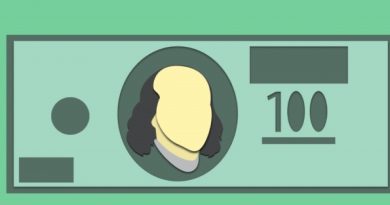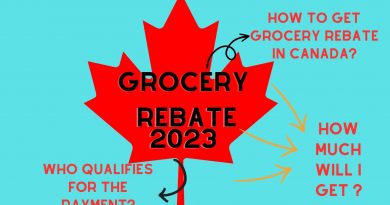Best 5 Ways to Apply for Debt Relief Ontario | Canada: Fix My Finances
Introduction
Being in debt can be overwhelmingly stressful, and it can be hard to know what to do next. However, there are options available to get you back on track. A debt relief program on fix my finances can help you regain control of your finances and move toward a debt-free future. In this article, we’ll go into more detail about applying for debt forgiveness and explore the options available.

Table of Contents
Understanding Debt Relief
Debt relief refers to any process or program designed to help individuals or businesses manage, reduce, or eliminate their outstanding debt. It is a way for people who are struggling with their finances to gain control over their debt and achieve financial stability. There are several different types of debt relief options available, including debt consolidation, debt settlement, and bankruptcy. Each option has its own advantages and disadvantages, and it is important to understand which one is right for your specific financial situation. Ultimately, the goal of debt relief is to help people regain control over their finances and move towards a debt-free future.
Debt Consolidation
Debt consolidation is a financial strategy that involves combining multiple debts into a single, new loan. The purpose of debt consolidation is to simplify an individual’s or business’s finances by reducing the number of monthly payments and potentially lowering the overall interest rate. This can make it easier to manage debt and make payments on time.
Debt consolidation typically involves taking out a new loan to pay off existing debts, such as credit card balances, personal loans, or medical bills. The new loan is then used to pay off the old debts, leaving the individual with only one loan to pay off. The new loan may have a lower interest rate than the old debts, which can save the individual money in interest charges over time.
Debt consolidation can be done through a variety of methods, such as taking out a personal loan, using a home equity loan, or transferring balances to a new credit card. However, it is important to carefully consider the terms of the new loan, including interest rates, fees, and repayment terms, before deciding to consolidate debt. It is also important to address the underlying causes of the debt and to develop a budget and financial plan to avoid future debt problems.
Debt Settlement
Debt settlement is a debt relief option that involves negotiating with creditors to settle outstanding debts for less than the full amount owed. Debt settlement is typically pursued by individuals who are struggling to make payments on their debts and are at risk of defaulting or falling behind on their bills.
The debt settlement process involves working with a debt settlement company or negotiating directly with creditors to reach a settlement agreement. In many cases, debt settlement companies will work with creditors on behalf of the individual, negotiating to reduce the total amount owed and develop a repayment plan that is more manageable for the individual.
Debt settlement can have a negative impact on an individual’s credit score, as the settlement will typically be reported as a “settled” or “paid in full for less than the full balance” on the individual’s credit report. However, it can also provide significant relief from the burden of debt and allow individuals to move towards a more stable financial future.
It is important to carefully consider the potential risks and benefits of debt settlement before pursuing this option. Working with a reputable debt settlement company or financial advisor can help individuals understand their options and make informed decisions about their financial future.
Bankruptcy
Bankruptcy is a legal process that allows individuals or businesses who are unable to pay their debts to either eliminate or repay their debts under the protection of the court. Bankruptcy is typically considered a last resort for individuals who have exhausted all other options for managing their debt and are facing financial hardship.
There are several types of bankruptcy, including Chapter 7 bankruptcy, which involves liquidating assets to pay off debts, and Chapter 13 bankruptcy, which involves creating a repayment plan to pay off debts over time. In some cases, bankruptcy may allow individuals to discharge certain types of debt, such as credit card balances or medical bills, although not all types of debt are eligible for discharge.
Filing for bankruptcy can have a significant impact on an individual’s credit score and financial future. It can also be a complex legal process that requires the assistance of a qualified bankruptcy attorney. Before filing for bankruptcy, it is important to carefully consider the potential benefits and drawbacks, as well as to explore other options for managing debt, such as debt consolidation or debt settlement.
How to Apply for Debt Relief
If you are struggling with debt, there are several steps you can take to apply for debt relief. The first step is to assess your debt and determine which debt relief option is best for you. You can do this by researching each option and consulting with a financial advisor or credit counselor. Once you have decided on a debt relief option, you will need to gather the necessary information and documentation to apply. This may include information about your debts, income, and credit score. Depending on the option you choose, you may also need to visit the fix my finances blog and apply for it.
Tips for Applying for Debt Relief
Here are some tips to keep in mind when applying for debt relief:
- Understand the pros and cons of each debt relief option and choose the one that is best for your situation.
- Make sure you have all the information and documentation required to apply for debt relief.
- Work with a reputable debt relief company or attorney who is licensed to provide debt relief services.
- Once you have chosen a debt relief option, make a plan and stick to it. This will help you achieve financial stability and become debt-free.
Conclusion
Debt can be a difficult challenge to face, but there are many debt relief options available to help you regain control of your finances. Whether you choose debt consolidation, debt settlement, or bankruptcy, it is important to research each option and work with a reputable company or attorney. By following these tips and sticking to your plan, you can overcome your debt and achieve a brighter financial future. Remember, it is never too late to start taking control of your finances and working towards a debt-free life. for more articles like this visit fix my finances blog site.



